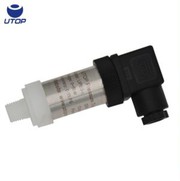Differences between digital and analog pressure transmitters
Mar 20, 2025
1. Signal Processing Method
Digital pressure transmitters are based on microprocessor technology, which converts analog signals from the sensor into digital signals and performs digital processing. This allows digital pressure transmitters UIB5 to have higher conversion accuracy and stability, as well as better anti-interference capability. Analog pressure transmitters, on the other hand, are based on analog circuits for signal conversion and processing, and may be affected by problems such as noise and drift, so their accuracy and reliability may be affected to some extent.
2. Accuracy and Resolution
Digital pressure transmitters use digital signal processing technology, with higher measurement accuracy and resolution. The accuracy of analog pressure transmitters UPB2 is mainly reflected in the resolution, the higher the resolution, the higher the accuracy, but may be subject to greater environmental interference.
3. Flexibility and Configuration
Digital pressure transmitters have a higher degree of flexibility and can be programmed and configured as needed to achieve a variety of signal processing and output methods. Analog pressure transmitters, on the other hand, have more fixed configurations and applications and are not easily customizable and flexible.
4. Output Method and Integration
Digital pressure transmitters have a digital communication interface, which facilitates control system integration for remote transmission and monitoring of pressure data. Analog pressure transmitters, on the other hand, typically have analog output signals and may require additional conversion equipment to connect to a digital system.
For details, please contact Qi Huang







